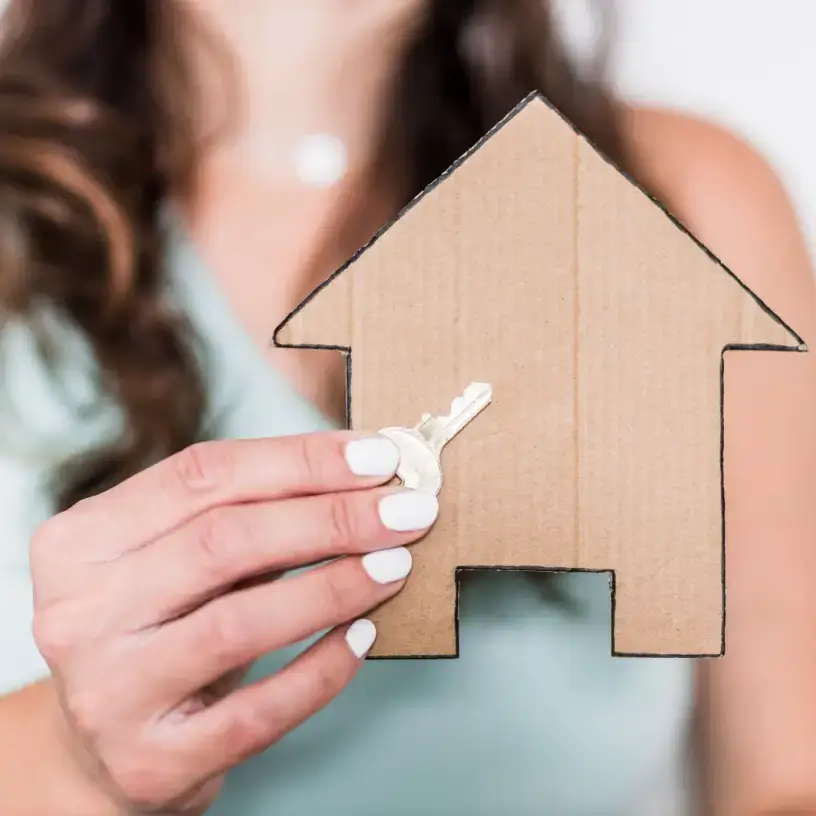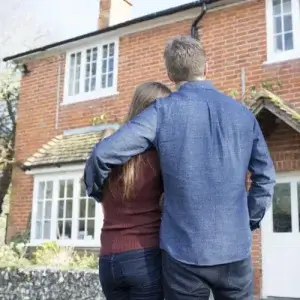Home / Home Loans / The First Home Owner Gra…




Key takeaways
- The First Home Owner Grant (FHOG) is a grant available to eligible first home buyers to assist them with the purchase of a new home.
- It was introduced by the Australian Government but is run on an individual state and territory basis.
- The grant amount that first home buyers can receive via the FHOG varies by state and territory, so check how much you may be eligible for based on where you live.
Expert tips regarding the FHOG
The FHOG is an invaluable resource for eligible first home buyers, but it’s important that prospective first home buyers understand the relevant eligibility criteria and how the FHOG works. With that in mind, our General Manager of Money, Stephen Zeller, has some tips for future first home buyers.

You (usually) can’t use the First Home Owner Grant for existing properties
Except when in the Northern Territory, the FHOG is exclusively for those buying a new (i.e. never lived in before) or substantially renovated home (please check your relevant State body to confirm eligibility criteria). Keep this in mind when you’re looking at properties, as an existing property likely won’t be eligible for the FHOG.
Submit your FHOG application ASAP
It can take a few weeks for your state/territory government to process a FHOG application form. This makes it a good idea to complete a form quickly once you’ve agreed on a purchase price for the property you’re looking to buy, especially if you’re planning on relying on the grant as a contribution towards your upfront home loan costs.
Got questions? We’re here to help!
As a first home buyer, figuring out how the FHOG could factor into your home loan application can sometimes feel a bit like navigating a maze! If so, feel free to contact our friendly team of expert mortgage brokers who can assist you with any queries.
The First Home Owner Grant explained
What is the First Home Owner Grant?

The First Home Owner Grant was introduced in 2000 to help Australians buy or build a home for the first time.¹ It’s a national scheme that was introduced by the Australian Government but is funded and administered by the individual states and territories around Australia.
The FHOG is a cash contribution paid to eligible first home buyers or builders, with the exact amount paid and eligibility requirements varying across Australia’s various states and territories.
How much is the First Home Owner Grant?
As the First Home Owner Grant is administered by the individual states and territories, the exact amount in question and the eligibility requirements you’ll need to satisfy to get it will be based on the state or territory you live in.
Depending on where you’re buying in Australia and what type of property you’re buying, the amount you could receive through the FHOG ranges from $10,000 to $50,000. The exact amounts on offer in each state and territory are:
- New South Wales – $10,000³
- Northern Territory – $10,000 for established homes or $50,000 for new homes⁴
- Queensland – $30,000⁵
- South Australia – $15,000⁶
- Tasmania – $10,000⁷
- Victoria – $10,000⁸
- Western Australia – $10,000⁹
The ACT ceased offering the FHOG for transactions entered into after 1 July 2019.²
Can you use two First Home Owner Grants to buy the same property?
The FHOG is generally paid per home, and only one person on the application can receive the grant. This prevents couples from both claiming the grant for the purpose of buying the same home.
Additionally, the FHOG is generally a one-time-only benefit; once you’ve received the FHOG, you typically won’t be able to receive it again or be a co-applicant of someone who hasn’t received it before. Generally speaking, most states and territories will not approve an individual’s FHOG application if one of their co-applicants has received the grant before.
Applying for and using the FHOG
How do I apply for the First Home Owners Grant?

You can apply for the FHOG in your state through an ‘approved agent’. This will typically mean either you complete and lodge your application form through your state/territory authority, or ask your lender/financial institution to lodge it for you.
Your application will typically need to be lodged within a year of settlement. Be sure to check with your state or territory’s revenue office for a list of approved agents (i.e. lenders and financial institutions authorised to facilitate FHOG applications).
When is the First Home Owners Grant paid?
When exactly the FHOG is paid to successful applicants may vary by state and territory, but it’s generally paid at settlement. If you’ve chosen to build your new home, the grant will typically be paid to the builder as part of the first progress payment.
If you’re an owner-builder (i.e. building the home yourself), the grant will be paid on receipt of the Certificate of Occupancy and any other supporting documents the government requires.
What can the First Home Owners Grant be used for?
Depending on when it’s paid, the FHOG can be used either as part of your deposit when buying or building a new home, or paid after the fact and put towards paying down the balance of your home loan principal.
However, some state/territory governments warn against counting on being able to use the grant as part of your deposit; in fact, the Queensland Government explicitly warns against depending on the grant for a deposit.⁵
The FHOG cannot be used to buy or build an investment property, regardless of which state or territory you live in, as the grant is strictly for owner-occupiers only.
What other assistance is available to first homebuyers?
The First Home Owner Grant isn’t the only government scheme designed for and available to first home buyers. There are several others that can be used instead of or even in conjunction with the FHOG:
- The First Home Guarantee allows first home buyers to purchase a home with a deposit as small as 5% without having to pay lenders mortgage insurance (LMI). This is because the Australian Government will guarantee the successful applicant’s home loan up to 20%, which is (typically) the cut-off mark for whether you pay LMI or not. As of February 2025, the scheme is capped at 35,000 places a year, and only available through certain lenders.10
- The First Home Super Saver Scheme allows you to withdraw voluntarily concessional and non-concessional contributions worth up to $50,000 across all years (a limit of $15,000 per financial year applies) from your superannuation, and then use those funds as part of your house deposit.11
- Stamp duty concessions are available to first home buyers in each state and territory (except for SA), which could help to save you a tidy chunk of change. First home buyers may be eligible for concessional rates of stamp duty or even receive a full exemption from paying any duty at all, based on:
- The state or territory they live in and the relevant building and residence requirements
- The value of the property/land they plan on buying
- Where the property is located (e.g. regional or urban)
- Whether the property in question is a new home, existing home or vacant land.
Each state and territory has different stamp duty concessions and eligibility requirements for said concessions, so check with your relevant housing authority or revenue office for more details. You can also chat to one of our expert brokers, who will be able to assist you with any questions you might have.
How does the FHOG work in each state and territory?
ACT
In the ACT, the First Home Owners Grant was replaced by the Home Buyer Concession Scheme (HBCS) on 1 July 2019.²
Rather than contribute to a first homebuyer’s funds on hand, the HBCS reduces or eliminates the amount of stamp duty (also known as transfer duty) that the buyer would have to pay on their property purchase.12
To be eligible for the ACT’s HBCS, a buyer must:
- Be at least 18 years of age or older
- Not have owned any other property in the last two years (the same applies to the buyer’s partner if they have one)
- Plan to live in the home continuously for at least one year following the date of settlement
- Not earn more in assessed taxable income than the relevant income threshold (which is determined by the number of dependent children the buyer has).
The income caps for each threshold are displayed in the table below.
| Number of dependent children | Total gross income threshold |
|---|---|
| 0 | $250,000 |
| 1 | $254,600 |
| 2 | $259,200 |
| 3 | $263,800 |
| 4 | $268,400 |
| 5+ | $273,000 |
The maximum stamp duty concession a buyer can receive is currently capped at $34,270, meaning any payable duty in excess of this amount must be paid in full by the buyer.
NSW
In NSW, eligible buyers may receive $10,000 via the First Home Owner’s Grant (New Homes) if they’re currently under contract for a new home, or building a new home on vacant land.³
To be eligible for the NSW FHOG, the following eligibility criteria must be met:3
- You must be at least 18 years old.
- You must be buying as a person, rather than through a company or trust.
- You must be buying or building a new home that no one has lived in before.
- The property in question must be worth $600,000 or less if newly constructed, or $750,000 or less if you’re building a new home on vacant land.
- At least one applicant must be an Australian citizen or permanent resident.
- You must take up residence within a year of the settlement date and live continuously in the home for 12 months.
NT
In the NT, eligible first home buyers stand to receive a grant of $50,000 if they’re buying or building a new home, or $10,000 if they’re buying an existing home.⁴ The NT Department of Treasury and Finance refers to the FHOG as the ‘HomeGrown Territory grant’ but it’s the same grant – just under a different name.
To be eligible for the HomeGrown Territory grant, you’ll have to meet the following requirements:
- You must not have owned a home before anywhere in Australia
- You must be buying as a person, rather than through a company or trust
- At least one applicant must occupy the home as their principal place of residence for a continuous period of 12 months commencing within 12 months of the completion date of the relevant property transaction
- Your FHOG application must be submitted within 12 months of buying your home
- At least one co-applicant must be at least 18 years old at the date of the relevant property transaction
- At least one co-applicant must be an Australian citizen or permanent resident
- Neither you nor any co-applicants can have received the FHOG before, anywhere in Australia.
QLD
In QLD, the FHOG currently gets you $30,000 if you’re buying a new home; meaning either a home that’s being built for you to live in or an established home that’s been ‘significantly renovated’.13 However, as of 30 June 2025, the grant amount will revert to $15,000.
The Queensland Government considers a property to be a ‘substantially renovated home’ if the renovations involved the removal or replacement of most of the building’s structural or non-structural components. A substantially renovated home must not have been lived in since the renovations were completed in order to be eligible for the FHOG in QLD.
To be eligible for QLD’s FHOG, you’ll need to meet the following requirements:
- You and any co-applicants for the grant must be at least 18 years old, and at least one of you needs to be either an Australian citizen or permanent resident.
- You and any co-applicants must not have received the FHOG before in any Australian state or territory.
- You and any co-applicants must not have owned residential property in Australia before.
- You must intend to move into the home in question within one year of the completed transaction and live there continuously for at least six months.
- The total value of the property in question must not be more than $750,000.
- The property in question must not have been sold or lived in since it was built or renovated.
SA
If you’re buying or building a new home in SA, you could be eligible for a grant of up to $15,000.
To be eligible for the FHOG in SA, you’ll have to meet the following requirements:⁶
- You must be buying or building a new home and planning to use it as your principal place of residence.
- The property must be worth $650,000 or less.
- At least one applicant must be an Australian citizen or permanent resident.
- All applicants must be at least 18 years old.
- You must move into the property within 12 months of settlement and live in the home continuously for at least 6 months after initially taking up residence.
- Neither you nor any co-applicants can have received the FHOG before anywhere in Australia.
- You and any co-applicants must have not owned an Australian residential property before.
TAS
In TAS you could receive up to $10,000 for buying a new or ‘off the plan’ home (homes that haven’t been built or are under construction).⁷
To be eligible for the FHOG, the following application requirements must be met:
- All applicants must be at least 18 years old and at least one must be either an Australian citizen or permanent resident.
- Applicants must not have received the FHOG previously or previously owned a property in Australia before 1 July 2000, or owned and occupied a residential property for more than six months following that date.
- All applicants must plan to use the property as their principal place of residence for a continuous period of at least six months.
- All applicants must take up residence within 12 months of the property transaction’s completion.
- The building must have never been occupied before or sold as a place of residence.
There are also building and transaction requirements you may wish to look into before applying.
VIC
If you’re buying or building your first home in VIC, you could be eligible to receive $10,000 from the state government.
To be eligible for the FHOG, you’ll have to meet the following requirements:⁸
- At least one applicant must be 18 years old or older and an Australian citizen or permanent resident.
- This must be the first home you’ve bought in Australia.
- The home must not have been previously occupied, sold as a place of residence or used as short-term accommodation (like an Airbnb).
- No applicant has previously received the FHOG in Australia before or owned residential property in Australia before 1 July 2000, or owned and occupied a residential property for more than six months following that date.
- The purchase price of the property in question must be $750,000 or less.
- At least one applicant must occupy the property as their permanent place of residence for at least 12 months following the settlement date.
WA
In WA, you could receive $10,000 if you’ve bought or built a new home. This grant applies if your home is worth $750,000 or less (for properties located below the 26th parallel of south latitude), or $1 million or less above the 26th parallel.
The 26th parallel runs across the width of Australia, marking the border between the Northern Territory and South Australia. In Western Australia, it’s marked by Shark Bay, so use that to estimate whether you sit north or south of the 26th parallel.
For you to be eligible for the FHOG, the following eligibility requirements must be satisfied:⁹
- You must be at least 18 years old.
- At least one applicant must be an Australian citizen or permanent resident.
- You must plan to occupy the home as your principal place of residence for at least six months continuously within 12 months of settlement date or construction completion.
- None of the applicants can have:
- Previously received the FHOG anywhere in Australia
- Owned residential property anywhere in Australia before 1 July 2000
- Owned residential property anywhere in Australia on or after 1 July 2000 and used it as a primary place of residence continuously for six months or longer on or after 1 July 2004.
Meet our home loans expert, Stephen Zeller
Stephen has more than 30 years of experience in the financial services industry and holds a Certificate IV in Finance and Mortgage Broking. He’s also a member of both the Australian and New Zealand Institute of Insurance and Finance (ANZIIF) and the Mortgage and Finance Association of Australia (MFAA).
Stephen leads our team of Mortgage Brokers, and reviews and contributes to Compare the Market’s banking-related content to ensure it’s as helpful and empowering as possible for our readers.
Want to know more about home loans?
- Firsthome.gov.au. First Home Owner Grant. 2025.
- ACT Revenue Office. First Home Owner Grant. 2025.
- Revenue NSW. First Home Owner (New Homes) Grant. 2025.
- NT.GOV.AU. HomeGrown Territory – guide to the grants. 2025.
- Queensland Revenue Office. First home owners’ grant. 2025.
- RevenueSA. First Home Owners Grant. 2025.
- State Revenue Office of Tasmania. First Home Owner Grant. 2025.
- State Revenue Office Victoria. Applying for the First Home Owner Grant. 2025.
- WA.gov.au. First home owner grant (FHOG). 2025.
- Housing Australia. First Home Guarantee. 2025.
- Australian Taxation Office. First home super saver scheme. 2025.
- ACT Revenue Office. Home buyer concession scheme (from 1 July 2019). 2025.
- Queensland Government. Eligibility for the first home owners’ grant. 2025.

